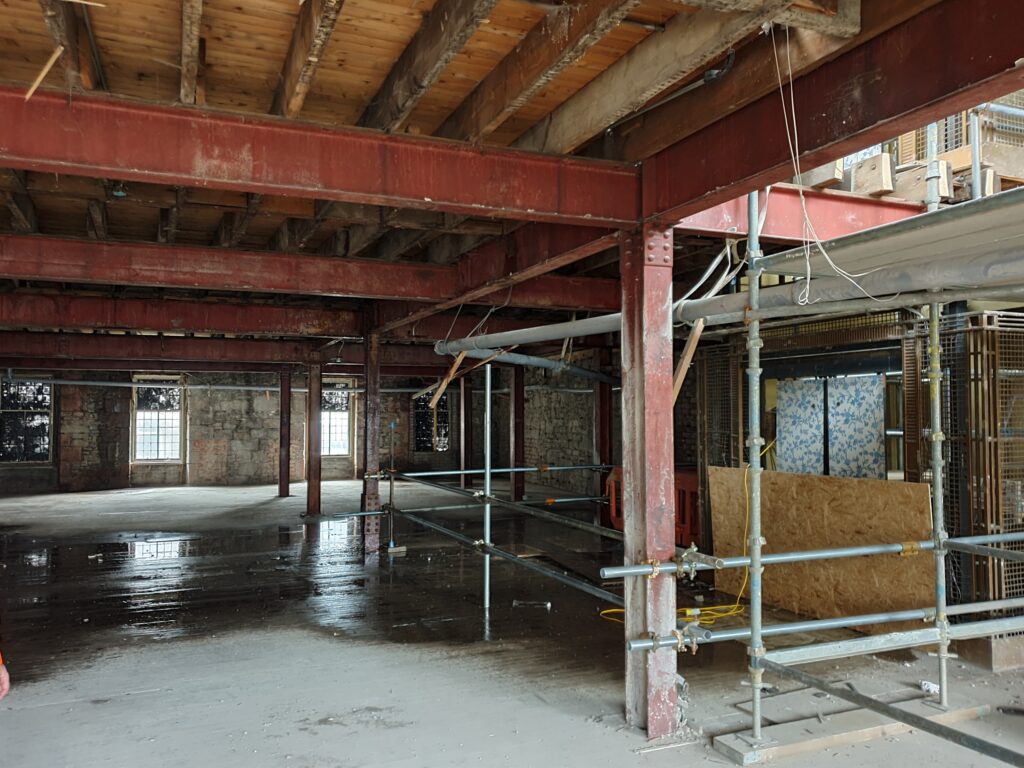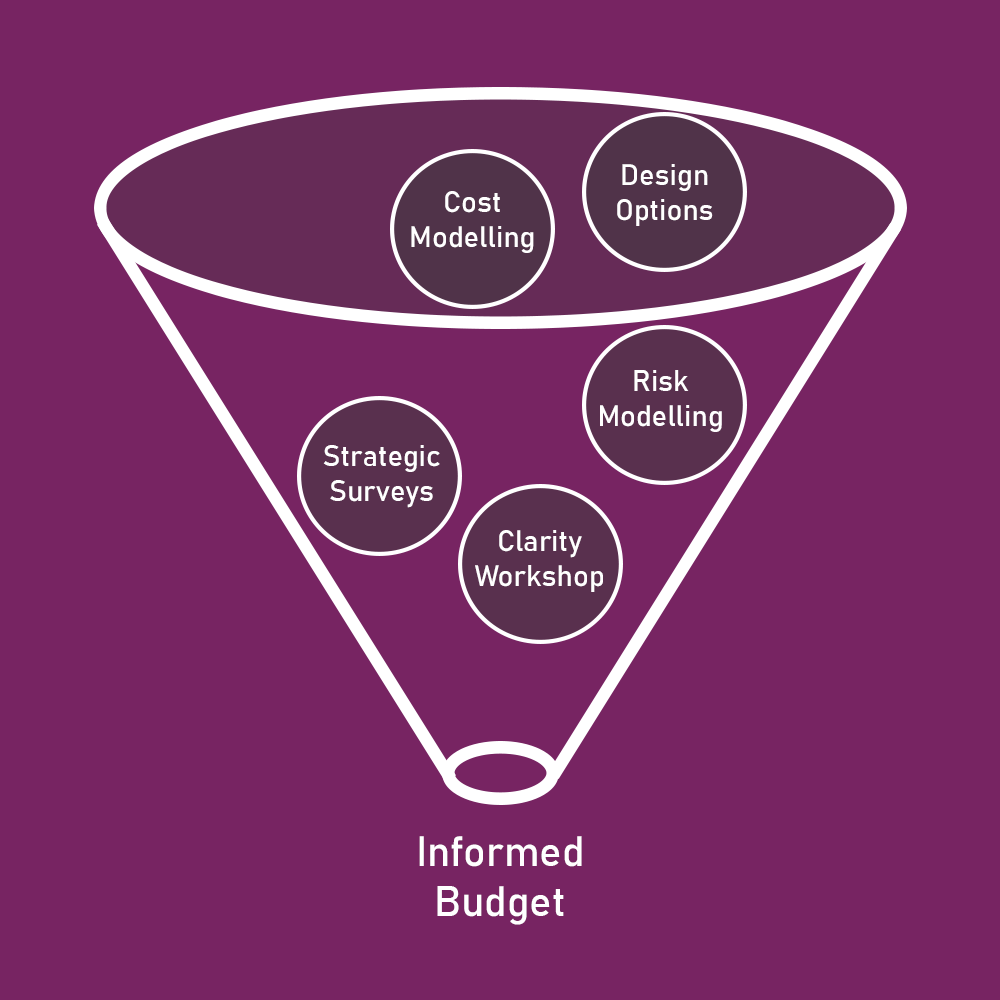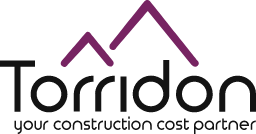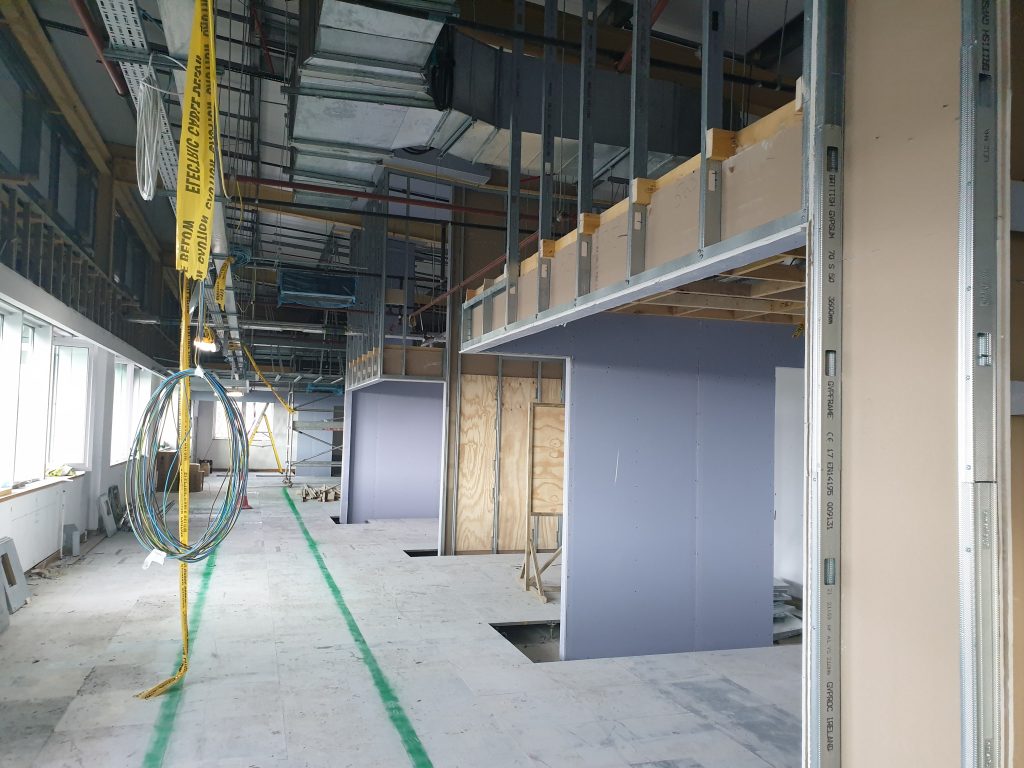
Many refurbishment projects will encounter expectation vs budget problems at some point in their lifetime, either resulting in an over-budget project, or a building that doesn’t fully meet its briefed requirement. But why is that? We know that they are inherently more risky than new-build projects, but the environmental benefits of refurbishment vs demolition are enormous, so what can we do about it to reduce risk and have more certainty on our costs from the beginning?
I’ve previously written about how we can achieve greater cost certainty through the design development and during construction stages, and the measures that we can collectively take as a project and client team during those stages to avoid wasteful cost and budget inflation. Some of these are proactive, and others are reactive when things don’t quite go to plan. However the majority of issues that cause uncertainty on a project can be prevented at the earliest stage through the establishment of an ‘Informed Budget’.
Informed Budgets are accelerated early stage assessments of the project brief, costs and risks. Their purpose is to allow clients to proceed with the next stage of a project with the confidence that the project has a solid basis from the beginning and allows fundamental business or development decisions to be made.
An Informed Budget shouldn’t be confused with what people often refer to as ‘back of a fag packet’ or ‘feasibility’ estimates which involve a budget being produced, usually in isolation from the design, and without taking much consideration for the potential risk profile of the project, meaning these could either be set too high (killing off an otherwise viable project) or as often is the case, too low (requiring future rationalisation of the project scope). Both of these scenarios are highly undesirable for obvious reasons. In an attempt to demonstrate viability of a scheme many clients will appoint a single consultant to develop their project brief (usually an Architect) and sometimes a QS is brought on board to check this as well, but this approach is a mistake for the following reasons:-
- The original briefed project may not take account of site specific risks which could directly affect what is possible to deliver, and/or the cost of the project. Percentage contingencies are widely known to be unreliable, even at the earliest stages.
- Other consultant’s input isn’t considered until design ideas have been committed and can lead to inefficient design or abortive works.
- When other members of the project team are appointed and radical changes are required this can lead to dissatisfaction as the original design intent is diluted, and may have already been communicated to key project stakeholders.
An Informed Budget process is more involved, and as such the initial investment is higher, but the potential gains are significant. They could be used either to determine how much funds to allocate to a project, or alternatively could be used to validate what the available budget can ‘buy’ if this is the key driver. For most refurbishment projects, the minimum requirements to establish an informed budget are;
- Clarity workshop comprising all key members of the design team.
- Identification of project specific risks to inform early investigations and risk allowances.
- Desktop and investigative surveys of the existing building / site.
- Top down and bottom up cost appraisals, which account for the risks and survey outputs.
- Early design options to establish feasibility of the project which are checked against budget, refined, and checked again as required.

Informed Budgets don’t replace the need for proactive development and management throughout the life of a project, but by following this iterative and investigative approach up-front, developers can be confident that potential issues in a building have been identified up-front and allocated for appropriately, the early designs that are developed meet the needs of the brief, and ultimately the process will result in better buildings, satisfied occupiers/users and a healthier bottom line.
Tags: Construction Cost Certainty










